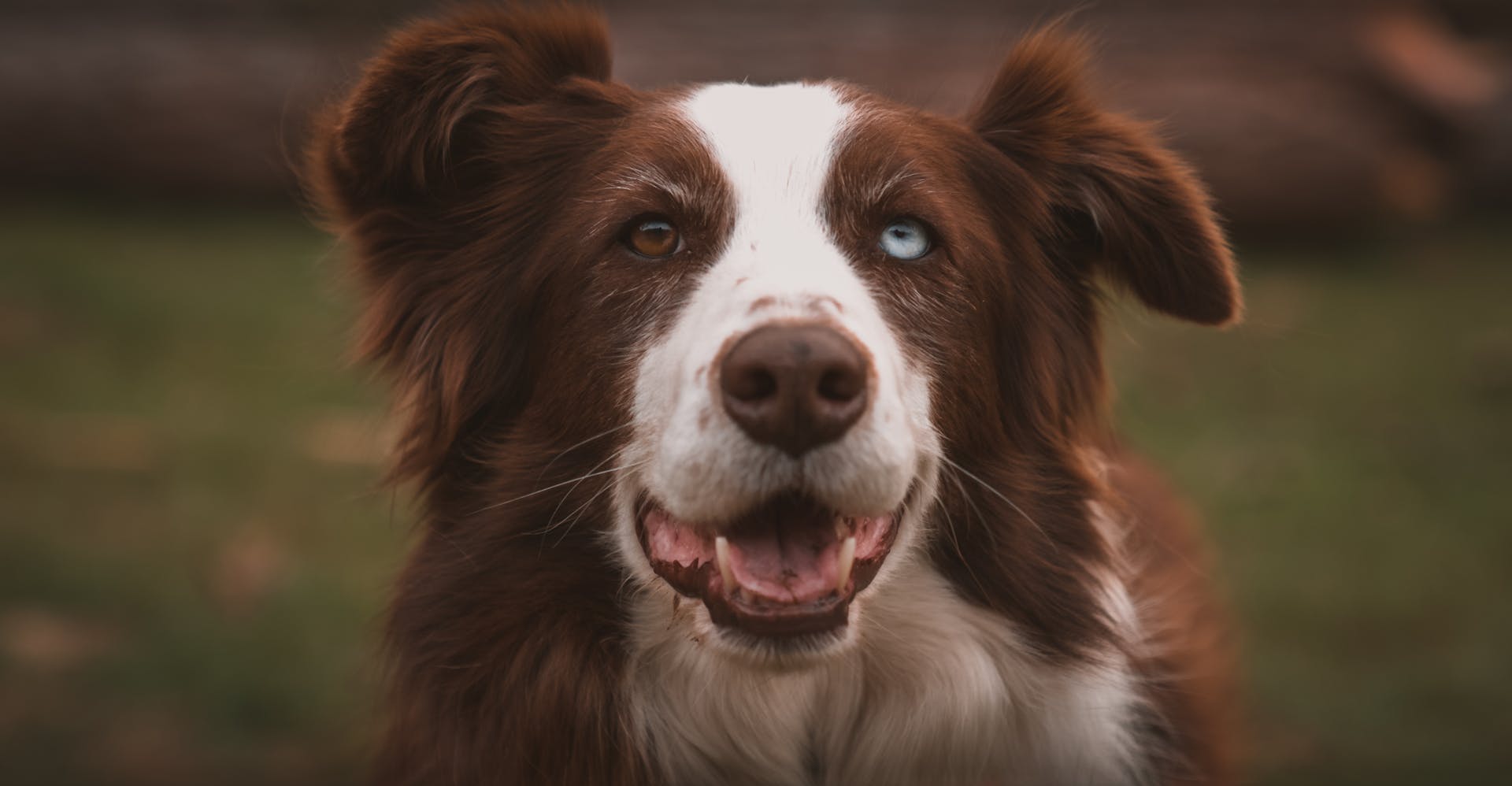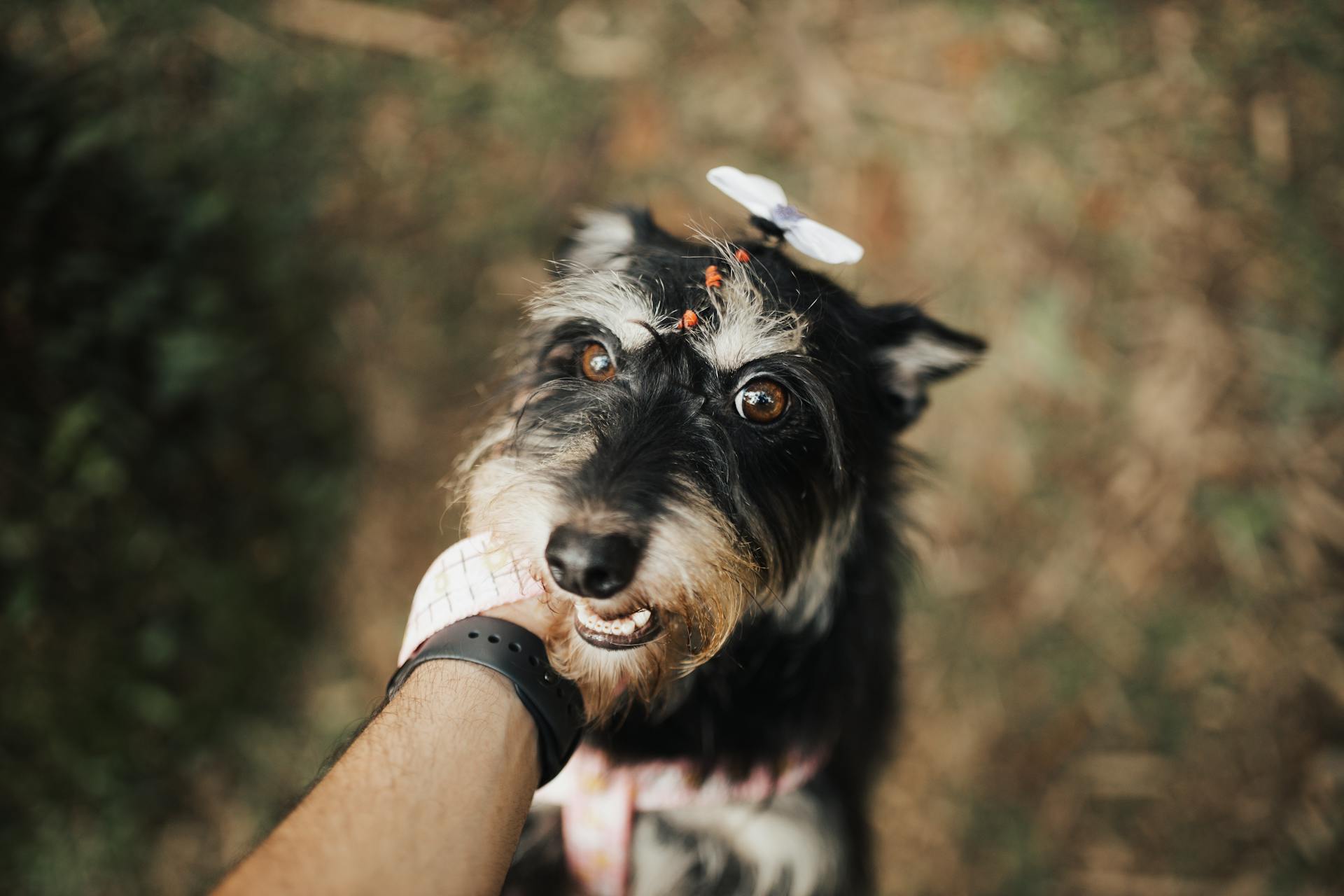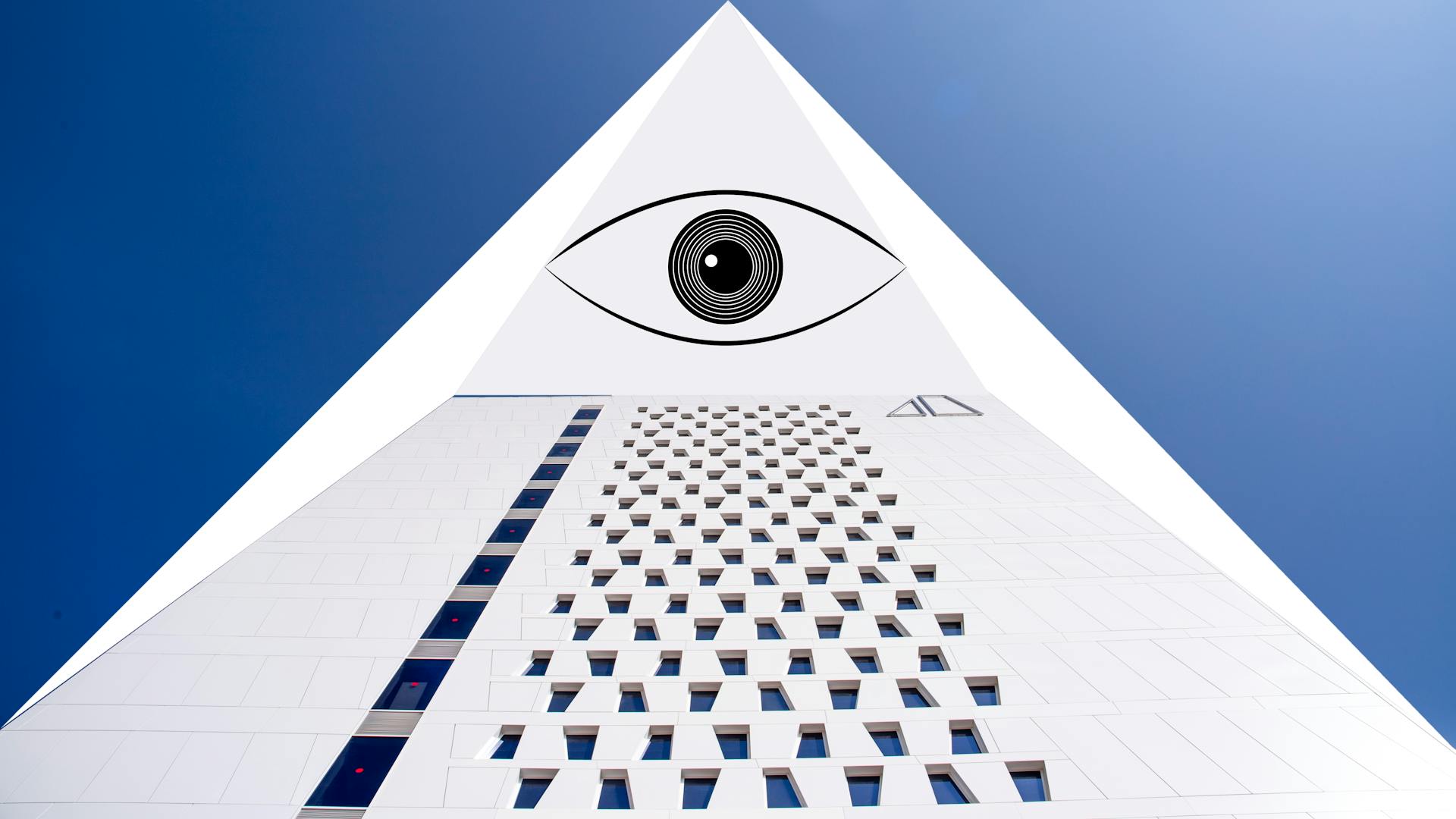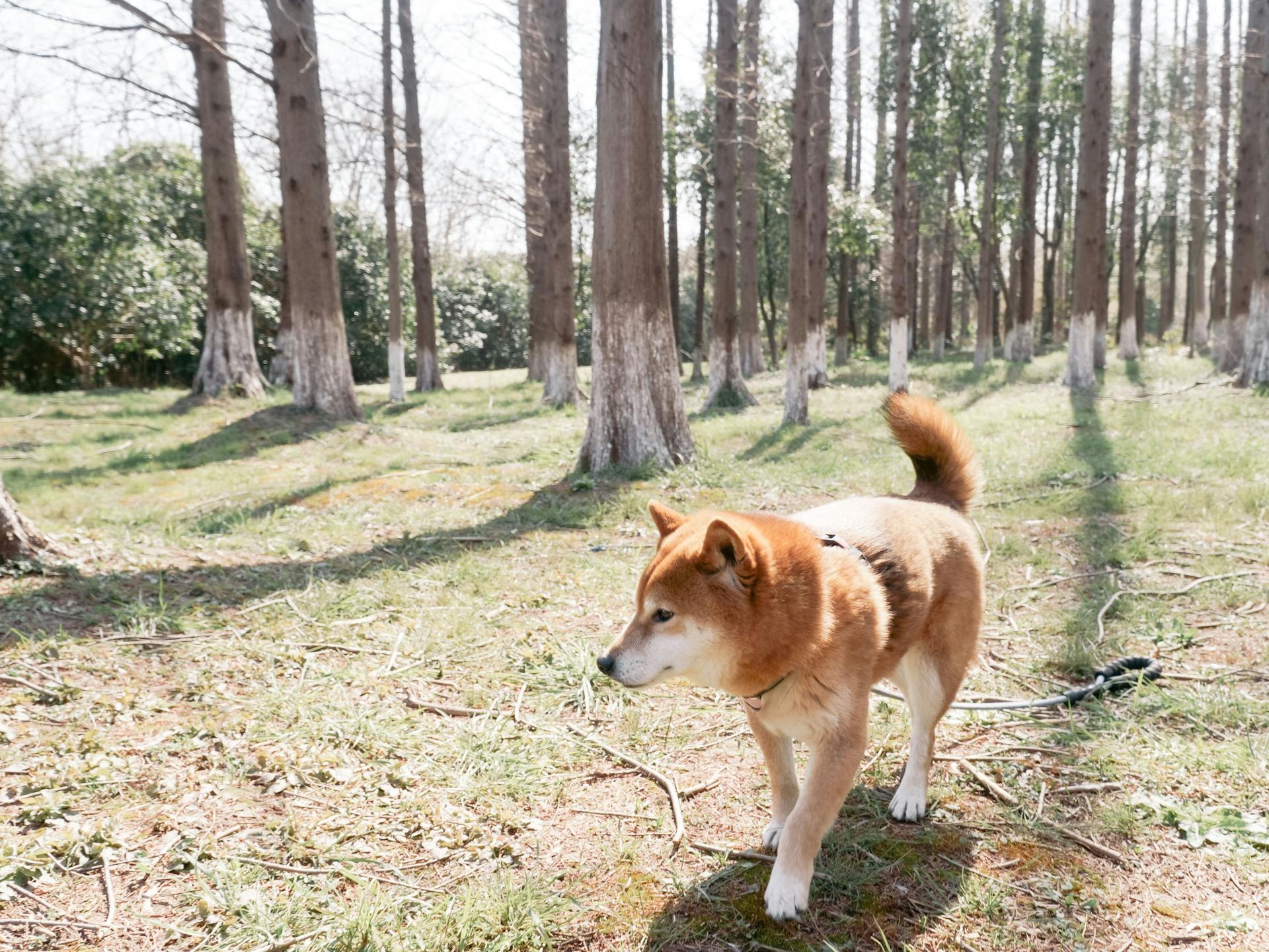
Shiba Inu eye health is a crucial aspect of their overall well-being. Shiba Inus are prone to certain eye problems due to their genetic makeup.
Proper care and regular check-ups can help prevent or detect issues early on.
Shiba Inus are more susceptible to eye problems than other breeds, with a 20% higher risk. This is due to their unique genetic makeup.
Regular cleaning of the eyes can help prevent tear duct problems.
What Are Shiba Inu Eye Problems?
Shiba Inus are prone to several eye conditions, some of which can be extremely painful and even cause blindness if left untreated.
Glaucoma is a medical emergency that can rapidly lead to blindness if not treated right away. Symptoms include squinting, watery eyes, bluing of the cornea, and redness in the whites of the eyes.
Your Shiba Inu is more likely to develop Distichiasis, a condition caused by extra hairs that grow inside the eyelid and rub on the surface of the eye, than other dogs. This can cause corneal ulcers and chronic eye pain.
Cataracts are a common cause of blindness in older Shibas, and surgery to remove them and restore sight may be an option. Many dogs adjust well to losing their vision and get along just fine.
What Causes?
Shiba Inus are prone to eye problems, and understanding what causes them is key to prevention and treatment.
Old age is a significant contributor to cataracts in Shiba Inus.
Genetics also play a role, with certain breeds like Cocker Spaniels, Miniature Poodles, and Siberian Huskies having a higher predisposition to cataracts.
Diabetes Mellitus can cause cataracts in Shiba Inus, with excess glucose in the blood leading to changes within the lens of the eye. In fact, 75% of diabetic dogs develop cataracts within 6-12 months.
Trauma to the eye can damage the lens and lead to cataract formation. This can occur from blunt force, a puncture, toxin exposure, electric shock, or intense radiation like UV light.
Chronic or severe inflammation inside the eye, or uveitis, can also induce changes in the lens, leading to cataract development.
Eye Problems
Shiba Inus are prone to a range of eye problems that can impact their quality of life.
Glaucoma is a painful disease that can rapidly lead to blindness if left untreated. It's characterized by symptoms such as squinting, watery eyes, bluing of the cornea, and redness in the whites of the eyes.
If you notice any of these symptoms, don't hesitate to seek emergency veterinary care – glaucoma is a medical emergency.
Cataracts are a common cause of blindness in older Shibas, and they can be identified by a cloudy appearance in the lens of the eye.
Surgery to remove cataracts and restore sight may be an option, and many dogs adjust well to losing their vision.
Distichiasis is a painful condition caused by extra hairs that grow inside the eyelid and rub on the surface of the eye.
If left untreated, these abnormal hairs can cause corneal ulcers and chronic eye pain, but several treatment options are available and the prognosis is good once the hairs have been permanently removed.
Some Shiba Inus may be born with structural defects in their eyes, which can cause vision problems.
Symptoms and Diagnosis
As a Shiba Inu owner, it's essential to be aware of potential eye issues that can affect your furry friend. Cloudiness or a bluish-gray appearance in the eye(s) is a common sign of cataracts in dogs.
Squinting or difficulty seeing in various lighting conditions, especially in dim light, is another symptom to look out for. This is often worse in low-light environments, so pay attention to your Shiba's behavior during walks or playtime.
Excessive tearing or discharge from the eyes can also indicate cataracts. If you notice any of these symptoms, it's crucial to consult with your veterinarian.
Bumping into objects or seeming disoriented, especially in unfamiliar environments, can be a sign of cataracts. If your Shiba is experiencing this, it's likely due to vision problems.
If cataracts are caused by diabetes, you may also notice increased thirst and urination and weight loss despite a normal or increased appetite. This is a critical symptom to monitor, as it can indicate an underlying health issue.
Here are the potential symptoms of cataracts in dogs to look out for:
- Cloudiness or bluish-gray appearance in the eye(s)
- Squinting or difficulty seeing in varied lighting conditions (often worse in dim light)
- Excessive tearing or discharge from the eyes
- Bumping into objects or seeming disoriented, especially in unfamiliar environments
- Increased thirst and urination and weight loss despite a normal or increased appetite (if cataracts are due to diabetes)
If you suspect your Shiba has cataracts, it's essential to schedule a vet visit. Your veterinarian will perform a detailed medical history and a nose-to-tail physical exam to diagnose the issue.
Treatment and Prevention
If your Shiba Inu is diagnosed with cataracts, surgery is the only treatment available to restore vision, and it's performed by a veterinary ophthalmologist.
The long-term success rate after surgery is approximately 80-90%, making it a viable option for many dogs.
Phacoemulsification is the most common and advanced surgical technique for cataract removal in dogs, using sound waves to break up the cloudy lens and an artificial intraocular lens to replace the natural lens.
Medications like anti-inflammatory and antibiotic eye drops are used before and after cataract surgery to reduce inflammation and prevent infection.
In cases where surgery isn't an option, veterinarians might recommend monitoring the cataract for progression and managing any associated inflammation or discomfort with medications.
Here are some surgical options for cataract removal in dogs:
- Phacoemulsification: uses sound waves to break up the cloudy lens and an artificial intraocular lens to replace the natural lens.
- Lens Extraction: a more traditional surgical method involving a larger incision through which the lens is removed.
It's essential to have a candid discussion with your ophthalmologist to determine if surgery is the right choice for you and your dog.
Treatment Options
Surgery with a veterinary ophthalmologist is the only treatment available to restore vision in Shiba Inus with cataracts.
The long-term success rate after surgery is approximately 80-90%. This means that many dogs can see clearly again after the procedure.
Phacoemulsification is the most common and advanced surgical technique for cataract removal in dogs. It involves using sound waves to break up the cloudy lens, which is then sucked out of the eye.
An artificial intraocular lens is often implanted to replace the natural lens, providing the dog with better postoperative vision.
Lens Extraction is a more traditional surgical method, involving a larger incision through which the lens is removed.
Anti-inflammatory and antibiotic eye drops are used before and after cataract surgery to reduce inflammation and prevent infection.
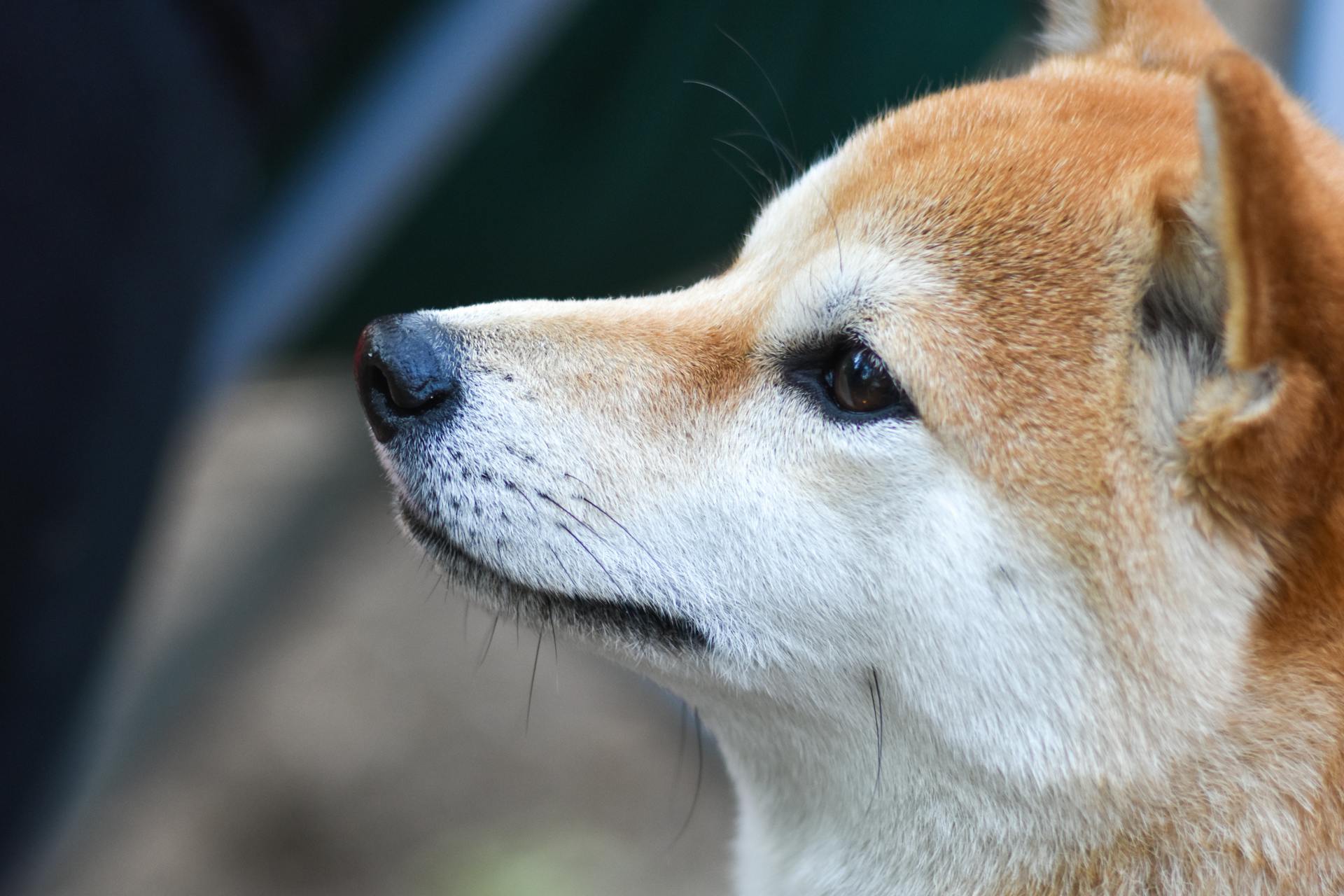
Unfortunately, there are not currently any medications available to resolve cataracts or delay their progression.
If surgery isn't an option or the cataract isn't severely affecting your dog, veterinarians might recommend monitoring the cataract for progression and managing any associated inflammation or discomfort with medications.
Here are the different surgical techniques used to remove cataracts in dogs:
- Phacoemulsification: uses sound waves to break up the cloudy lens
- Lens Extraction: involves a larger incision through which the lens is removed
Canine Treatment Costs
A visit to a veterinary ophthalmologist for an initial examination typically costs $200 to $300, depending on the region.
The cost for phacoemulsification, a common surgery to treat canine cataracts, can range between $2,500 and $4,500 per eye.
This fee generally includes the pre-operative assessment, the surgery itself, anesthesia, medications, and some follow-up appointments.
The cost can vary depending on the region, so it's essential to factor that in when considering treatment options.
Shiba Inu Eye Health
Shiba Inu eye health is a crucial aspect of their overall well-being. As a breed, Shiba Inus are prone to various eye conditions, some of which can cause blindness if left untreated.
Glaucoma is a painful and potentially blinding disease that can affect Shiba Inus. It's a medical emergency that requires prompt treatment, and symptoms include squinting, watery eyes, and bluing of the cornea.
Cataracts are a common cause of blindness in older Shibas, but many dogs adjust well to losing their vision and can live happily with the condition. Surgery to remove cataracts and restore sight may also be an option.
Distichiasis is a condition where extra hairs grow inside the eyelid and rub on the surface of the eye, causing pain and potentially leading to corneal ulcers if left untreated.
Preventing Canine Illness
Feeding your Shiba Inu a high-quality diet is crucial for promoting overall eye health.
A good diet can help support the health of your dog's eyes and potentially prevent issues like cataracts from developing.
By doing your best to avoid trauma and UV exposure to your Shiba Inu's eyes, you can also help protect them from potential harm.
Keeping up to date on wellness exams with your vet is essential for catching any eye problems early, when they're easier to treat.
Breeders play a vital role in preventing cataracts in Shiba Inus by screening potential breeding dogs for known hereditary cataract genes and early signs of the condition.
A Unique Breed
The Shiba Inu is a unique breed with a rich history and distinct personality. They originated in Japan and were used for small game hunting in the dense brush of the mountains.
Shibas are often described as cat-like due to their fastidiously clean and independent nature. They are notoriously easy to housebreak and are often busy grooming themselves and other members of their pack.
One of the most notable characteristics of Shibas is their bold and fearless attitude. They are confident and self-reliant, making them great companions.
However, Shibas can also be prone to certain behaviors, such as being snappy when nervous and possessive of toys and food. They can also be territorial with larger dogs, especially of the same sex.
Here's a summary of some key characteristics of Shibas:
- Confident and self-reliant
- Loyal to those they trust
- Energetic, active, and athletic
- Protective of family; good watchdog
- Lovable, playful companion
- Bold, steady, and fearless
Despite their potential quirks, Shibas make wonderful companions for the right owner. With a calm-assertive and consistent leader, they can be gentle and affectionate family pets.
Your Health
Shiba Inus are more likely to develop eye problems than other breeds, so it's essential to keep an eye out for symptoms.
Glaucoma is a painful disease that can lead to blindness if left untreated, and it's more common in Shiba Inus. Symptoms include squinting, watery eyes, and redness in the whites of the eyes.
Regular check-ups with your vet are crucial to catch glaucoma early, and they'll perform an annual glaucoma screening to diagnose and start treatment as soon as possible.
Cataracts are a common cause of blindness in older Shiba Inus, and they can be detected by checking the lenses of their eyes for opaqueness.
Distichiasis is a painful condition caused by extra hairs inside the eyelid that rub on the surface of the eye, and it's more common in Shiba Inus. If left untreated, it can cause corneal ulcers and chronic eye pain.
Preventing eye problems starts with a high-quality diet, avoiding trauma and UV exposure, and keeping up with regular wellness exams with your vet.
Breeders play a crucial role in eye health by screening potential breeding dogs for hereditary cataract genes and early signs of the condition.
Frequently Asked Questions
Why do Shiba Inus squint their eyes?
Squinting in Shiba Inus can be a sign of glaucoma, a painful eye condition that can lead to blindness if left untreated. If you notice your Shiba Inu squinting, it's essential to consult a veterinarian to rule out this serious condition
Sources
- https://www.norcalshiba.com/the-eyes-have-it-unique-features-of-the-shiba-inu/
- https://myfirstshiba.com/shiba-inu-cataracts/
- https://glasgowvetclinic.com/client-resources/breed-info/shiba-inu/
- https://www.petsurg.com/client-resources/breed-info/shiba-inu/
- https://pvahnj.com/client-resources/breed-info/shiba-inu/
Featured Images: pexels.com
